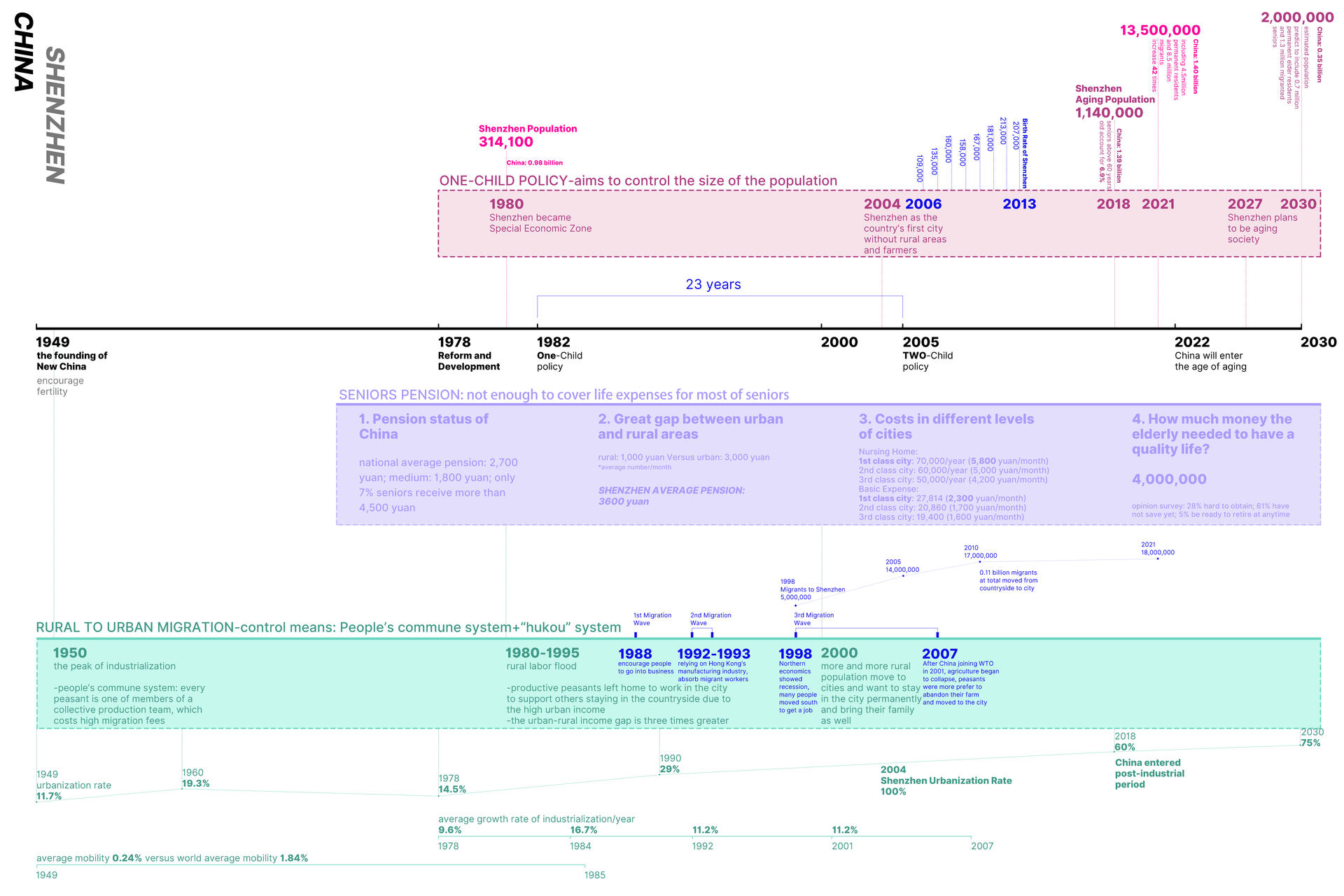Image
GUOXI ZHOU
ABSTRACT
My focus is on the continuously growing aging population. We know the world is rapidly aging. We know countries and cities are experiencing a demographic shift. But we keep neglecting and underestimating those changes. Cities do not pay attention to and prepare for the needs of the elderly. Given that China has a huge number of seniors living in the city, I am working on the topic of how landscape architecture can support the seniors’ needs within the city’s aging population in Shenzhen. Using the urban Village of Gangxia in Shenzhen, China as a testing ground, in my thesis, I will explore how the city currently provides space for seniors and where there are opportunities to improve the design of urban villages to better support seniors’ needs. Changes Come With Aging.
As people get old, their areas of activity begin to narrow. Even though there are some public recreational resources around the village, the public spaces inside the village can not be less. The vast majority of the space is used for indoor housing. Buildings are not tall, but the distance between two adjacent buildings is super small, in which people can shake their hands with each other. To achieve an age-friendly village, I seek for possibilities on alleys and roads and a couple of less utilized spaces. My proposal is to create a type of space which I call tidal space. Tidal space is a flexible space. Within it, the same space can not only keep original functions to meet daily needs for every user, but also provide more support for seniors needs at different times of the day.
The desires of seniors show that they will keep staying after retirement, which adds more burden to the city. Low pension, high living expenses and high fees for medical care are the difficulties seniors meet in Shenzhen. Most of people in the city cannot live by themselves independently for a medium-quality life by merely relying on their limited pension.
Image

Image

